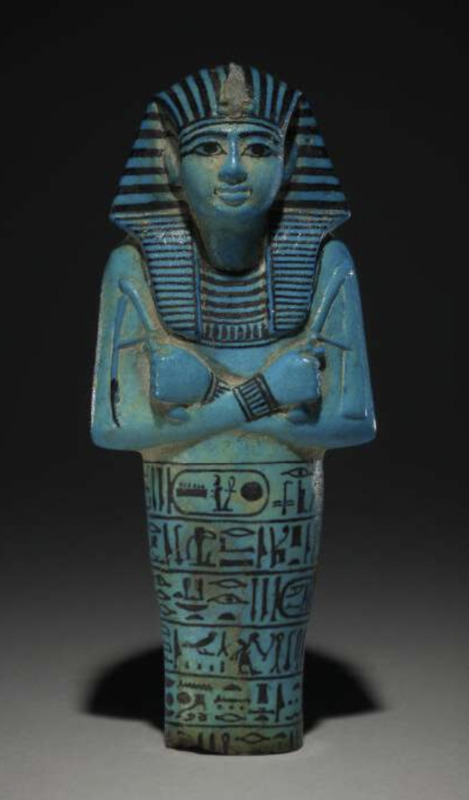Shabti
The British Museum has a large collection of shabtis, a form of burial figurine that was important in ancient Egyptian beliefs about the afterlife. These figures were put in tombs to serve the deceased in the world of the dead, bringing comfort and assistance with manual labour.
Shabtis are miniature statues that normally stand between 10 and 30 centimetres tall. They were painstakingly constructed from materials such as faience, wood, and stone. The figurines feature a human figure, usually mummiform (covered in burial shrouds), with arms crossed over their chest and holding agricultural equipment or other symbolic objects.
Purpose and Beliefs: The Ancient Egyptians believed that the deceased will continue to live and work in the afterlife just as they did on earth. Shabtis were developed to lessen this burden by acting as replacement labourers for the deceased. The inscriptions on the shabtis comprised Book of the Dead spells and prayers, allowing the figurines to react when summoned and do their allotted responsibilities in the afterlife.
Variety and Personalisation: The British Museum's shabti collection displays the wide range of forms, materials, and inscriptions found on these figurines. Some shabtis, with complex decorations and fine craftsmanship, were manufactured for royalty or high-ranking officials. Others were simpler in style, indicating the deceased's social rank. The name of the deceased was written on the body of each shabti, preserving its connection to the exact individual it served.
Symbolism and Meaning: The tools carried by shabtis represent the different jobs that the deceased would perform in the afterlife, such as farming, cooking, or construction. The number of shabtis buried with a person was frequently tied to the deceased's position and riches. Inscribed on the figurines were elaborate funerary writings and spells that emphasised their status as devoted servants ready to answer the call of duty in the afterlife.
The British Museum's shabti collection is expertly conserved and presented, allowing visitors to appreciate the delicate features and symbolism of these ancient artefacts. The display includes educational labels and multimedia presentations that provide information about the cultural and theological significance of shabtis in ancient Egyptian burial customs.
The British Museum's shabti collection provides an intriguing peek into ancient Egyptian belief systems and their preparations for the afterlife. These little figures, made with care and purpose, served as loyal and dutiful attendants in the realm of the dead, ensuring the comfort and aid of the deceased. Exploring the shabti collection allows visitors to connect with ancient Egypt's spiritual beliefs and rituals, expanding our understanding of this enthralling civilization.
